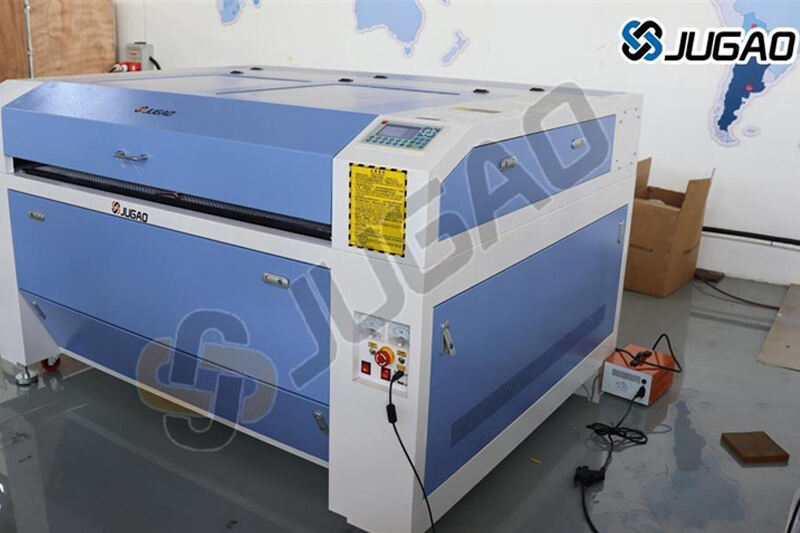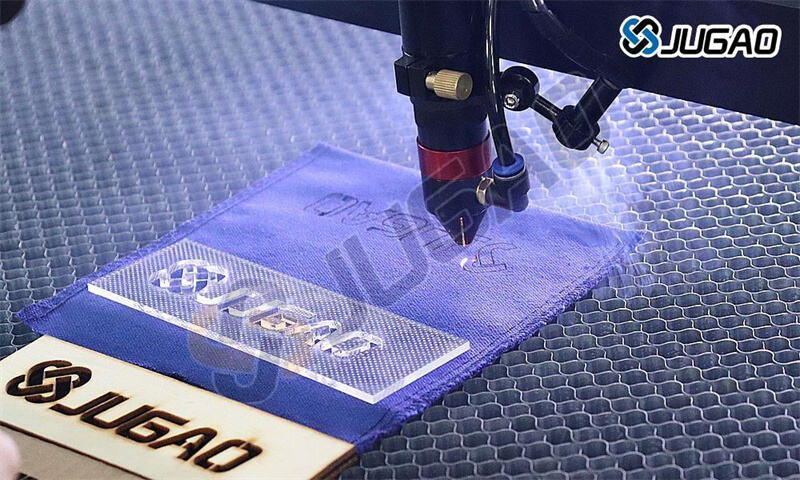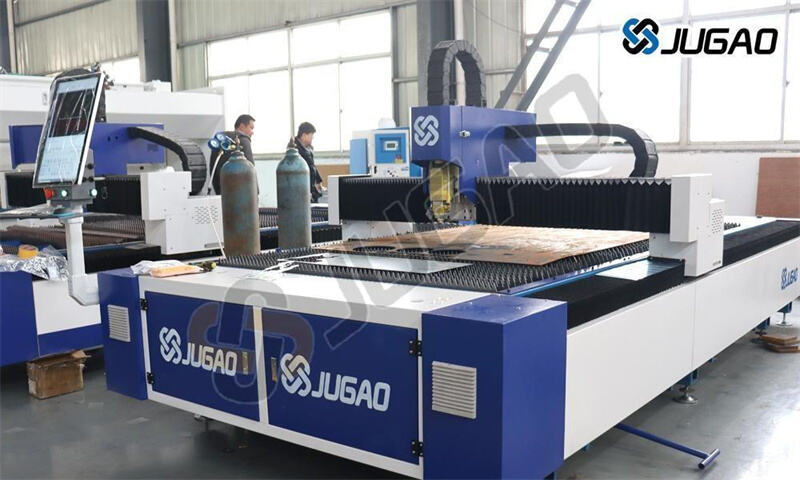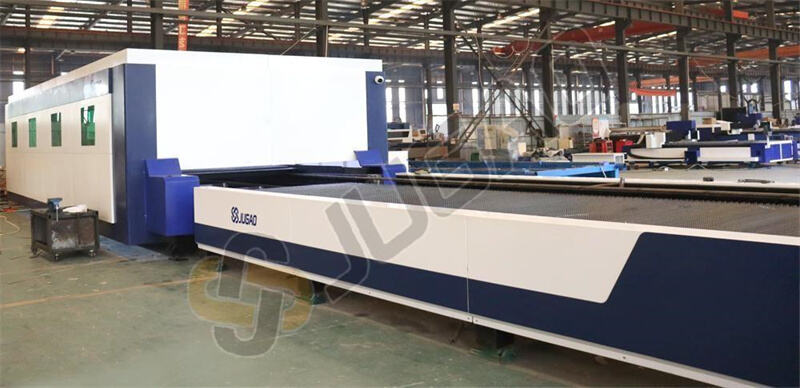Laserlõiketerade suuruste üldine klassifitseerimine
Tööstusliku klassi laser süsteemi kategooriatsoon
Laserlõikeseadmed on süsteemselt jaotatud kolme peamisse kategooriasse, lähtudes toimimisvõimest ja füüsilistest mõõtudest. Selline klassifikatsiooni raamistik võimaldab täpset vastavust seadme võimete ja konkreetsete tööstuslike nõuete vahel erinevates tootmisulatustes.
1. Kompaktne täppislasersüsteemid
Tehnilised kirjeldused:
Tööpiirkond: 300×200 mm kuni 600×450 mm (12"×8" kuni 24"×18")
Laseri võimsus: 30 W–100 W (CO₂/kiud)
Asendustäpsus: ±0,01 mm
Pindala: <1,5 m² integreeritud suitsuimega
Täiendavad funktsioonid:
Kõrge eraldusvõimega galvanomeeternihe (kuni 5000 dpi)
Õhu jahutusega laserallikad energiasäästuks
Puuteekraaniga HMI koos erialase disainitarkvaraga
Automaatne fookuse reguleerimine (±0,1 mm)

Sihipraktikad ja rakendused:
| Tööstus | Tüüpilised rakendused | Tehnilised eelised |
| Joonestus ja valmistamine | Mikrogravüür, hõbe ja hinnaliste metallide lõikamine | 20 mikroni täppide suurus keeruliste detailide jaoks |
| Elektroonika | PCB depaneling, mikrokomponentide valmistamine | Vibratsioonivaba graniitpind |
| Meditsiiniseadmed | Kirurgiliste instrumentide märgistamine | Class1 puhtsusklassi ruumiga ühilduvus |
| Haridus | Inžennerprototüüpimine | Turvalisuslukud ja vähendatud võimsuse režiimid |

2. Keskma otsa tootmisega laserlõikurid
Tehnilised kirjeldused:
Tööpiir: 600×450 mm kuni 1200×900 mm (24"×18" kuni 48"×36")
Laseri võimsus: 100W-300W (Kiud/Ketas)
Lõikamise kiirus: kuni 20 m/min (1 mm kerge teras)
Pindala: 3-5 m² koos materjalikäitlemise süsteemiga
Täiendavad funktsioonid:
Kahe laseriga hübriidkonfigureerimise valikud
Automaatne duši vahetamise süsteem
Reaalajas kiirguse diagnostika
Ennustava hoolduse liides

Tööstuslikud rakendused:
Autotööstuse teise astme tarnijad:
Keelpilli prototüüpimine
Sisustuse komponentide valmistamine
Puhusakkude tootmine
Müügikoha ekraanid:
Mitmekihilised akrüülikonstruktsioonid
Metall-puu komposiitstruktuurid
Kiirendatud vektorkärme
Tekstiilitööstuse täiustatud tootmine:
Tehnilise kangastöötlemine
Komposiitmaterjali paigaldamine
Automaatne mustri paigutamine
3. Raske töökindlusega tööstuslaserplatvormid
Tehnilised kirjeldused:
Tööpiir: 1200×900 mm kuni 2500×1500 mm+ (48"×36" kuni 100"×60"+)
Laseri võimsus: 300 W–15 kW (kiud/CO₂)
Materjali maht: kuni 50 mm kerge teras
Pindala: 8–15 m² perifeersüsteemidega
Täiendavad funktsioonid:
Vardasüsteemi liigutusjuhtimissüsteemid (0,05 mm/m täpsus)
Mitme paleti automaatne laadimine
Adaptiivse lõiketera tehnoloogia
Integreeritud kvaliteedikontrolli moodulid

Raskurahanduse rakendused:

Tehniline võrdlusmaatriks:
| Parameeter | Kompaktne | Keskmine | Tööstus |
| MaxSheet paksus* | 3mm | 10mm | 50mm |
| Tavaline tolerants | ≤0,02 mm | ≤0.05mm | ≤0.1mm |
| Võimsustarbe | 2-5 kVA | 10-20kVA | 30-100kVA |
| Automatiseerimise tase | Käsiraamat | Poolautomaat | Täisautomaat |
| Tsükliaeg (1m2) | 2-4 tundi | 30-60 min | 5-15min |
*Kergele terasele O₂ abiga
Valikumeetodika
Nelja sammu otsustusraamistik:
1. Materjali profiilianalyys
Tehke metallurgiline testimine
Mõõta soojusjuhtivust
Määrata peegeldusindeks
2. Tootmismahu hindamine
Arvutage aastast läbipääsu nõuded
Hindage töövahetuste mustreid
Projekteerige kasvusenaareid
3. Seadme auditi
Mõõda saadavalolev põrandapind
Kinnita elektrivarustuse infrastruktuur
Hinda materjalide liikumise teed
4. Omanduskulude kogumudel
Põhivaradega seotud kulud
Kulutusmaterjalide kulu
Hooldustöö tundide arv
Energia kulutus
Uue tehnoloogia integreerimine
Nutikate tootmisseadmete funktsionaalsus:
Internet of Things (asjade interneti) abil võimaldatav jõudluse jälgimine
Pilveteenuses põhinev tööde ajakava koostamine
Täiendatud reaalseisu hooldusjuhendid
Masinõppe protsessi optimeerimine
Keskkonnasäästlik toimimine:
Energia taaskasutuse süsteemid
Suletud veesoojendus
Purilise filtreerimine >99,97%
Müra vähendavad korpused
See klassifikatsioonisüsteem võimaldab tootjatel:
Vähendada seadmete valikuaega 40–60%
Optimeerida kapitalikulu ROI-d
Vähendage tootmisahelate kitsendusi
Tehnoloogiainvesteeringud tulevikku silmas pidades
Parimate tulemuste saavutamiseks pidage nõu laseri rakendusinseneridega, et läbi viia täielik tootmeanalyys enne seadmete tehniliste näitajate kinnistamist.


















































